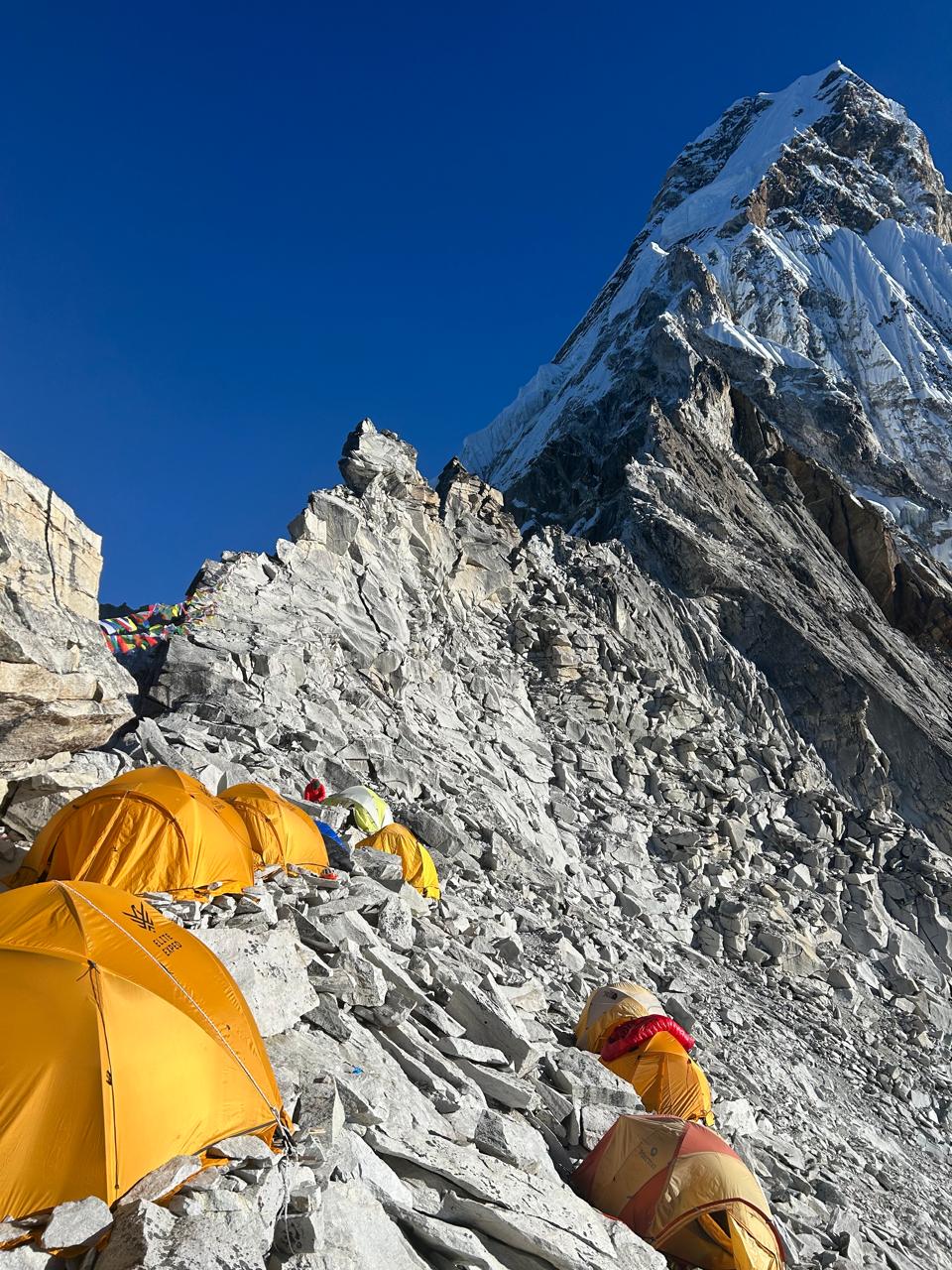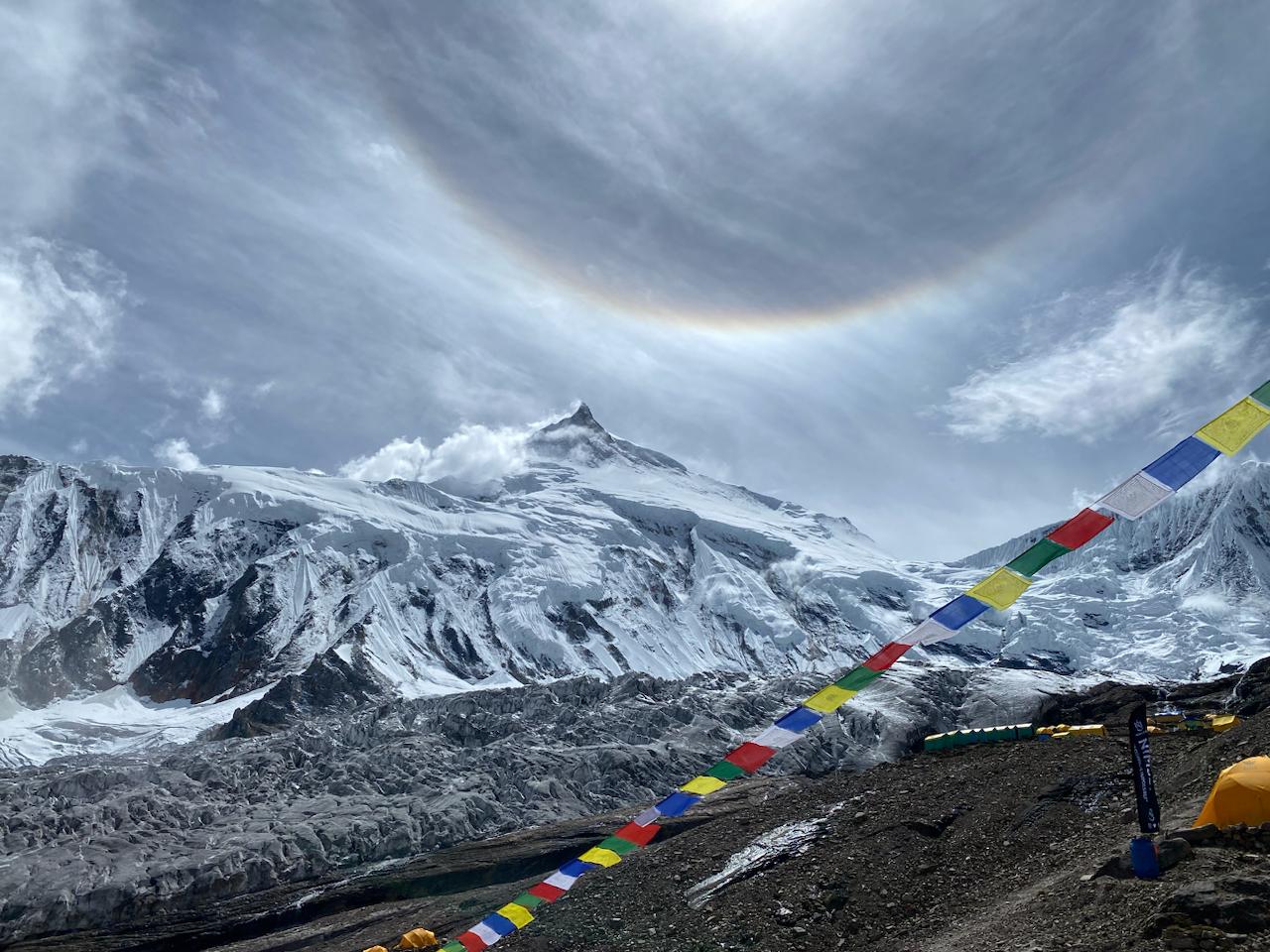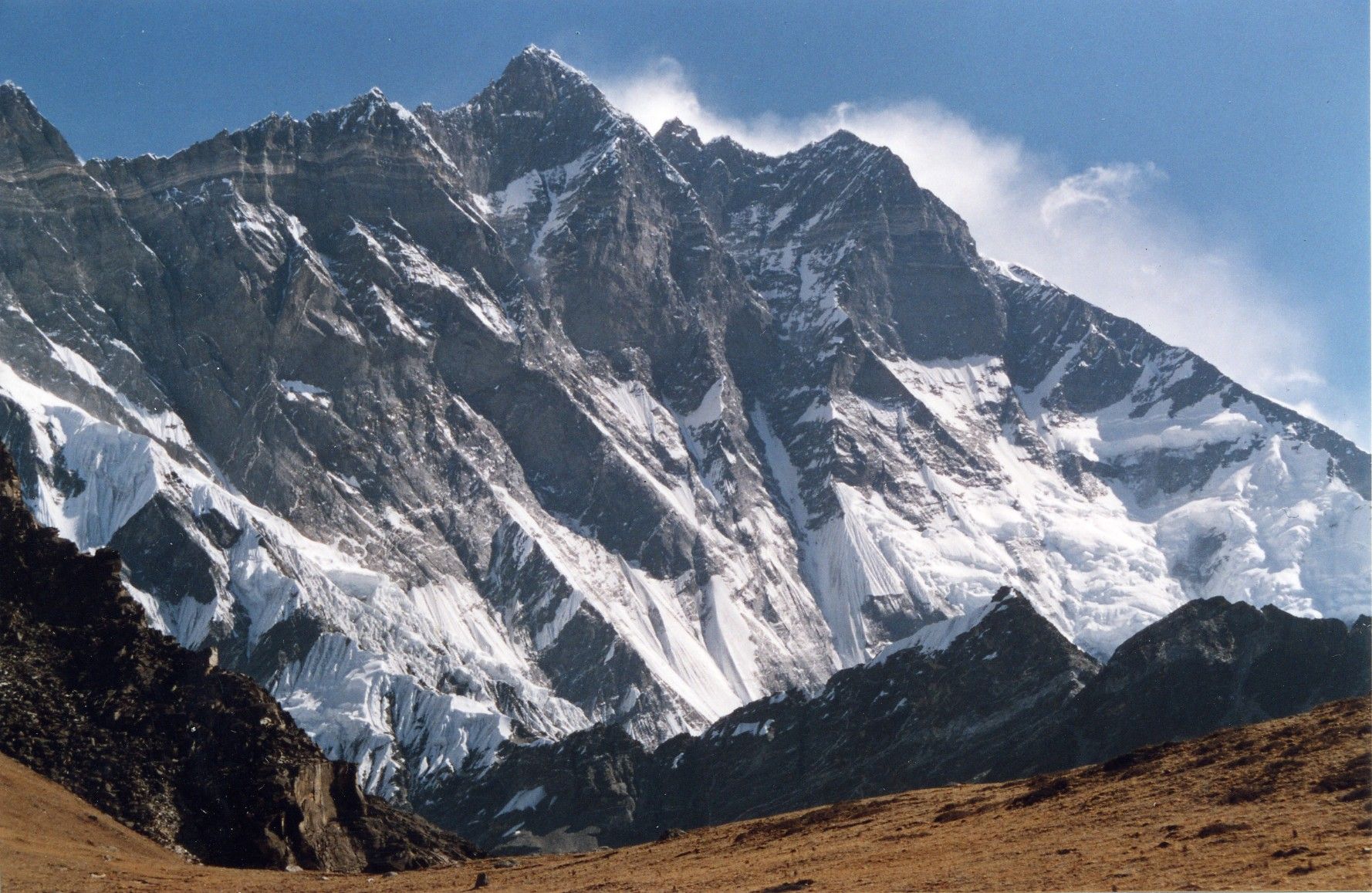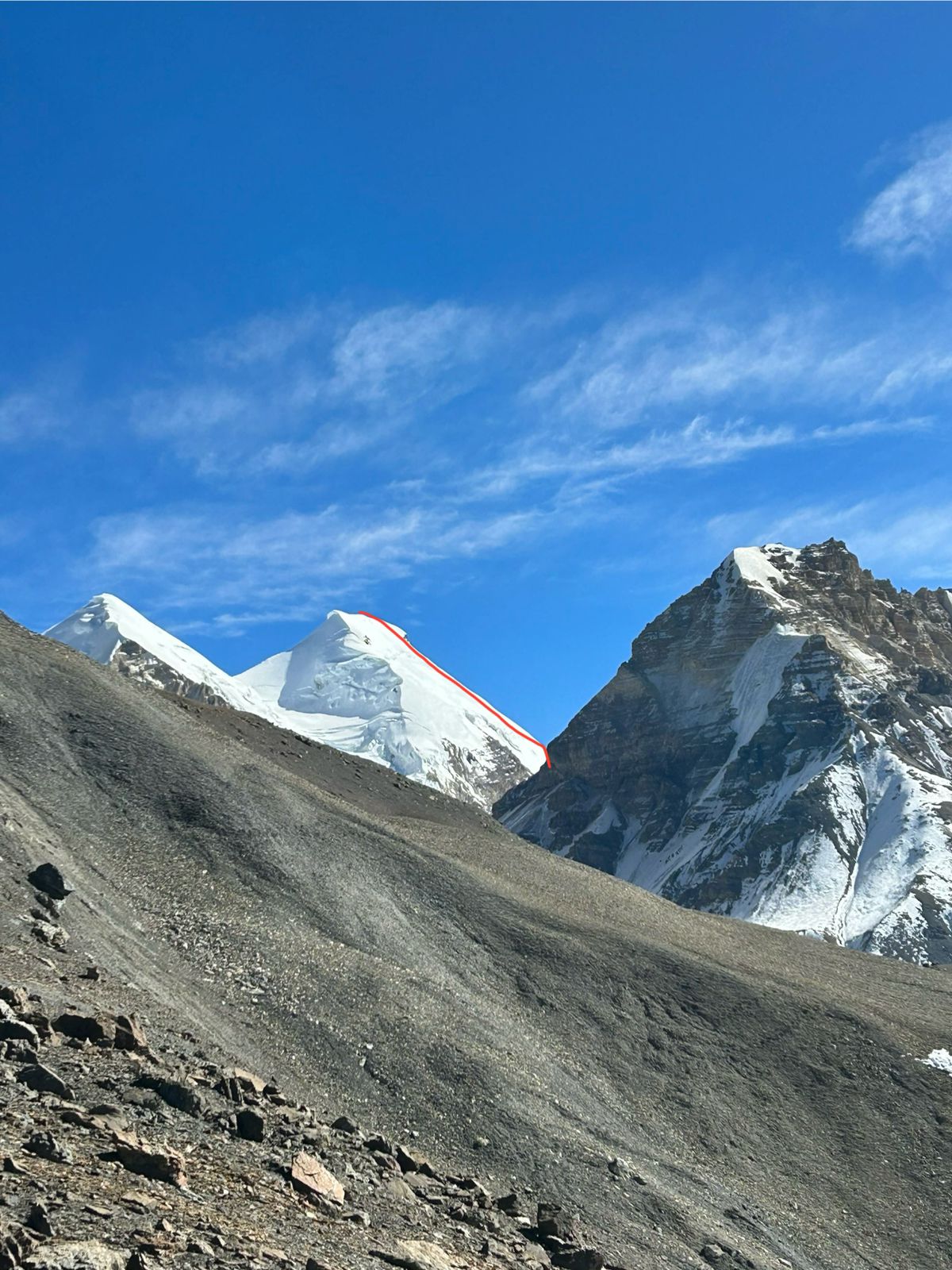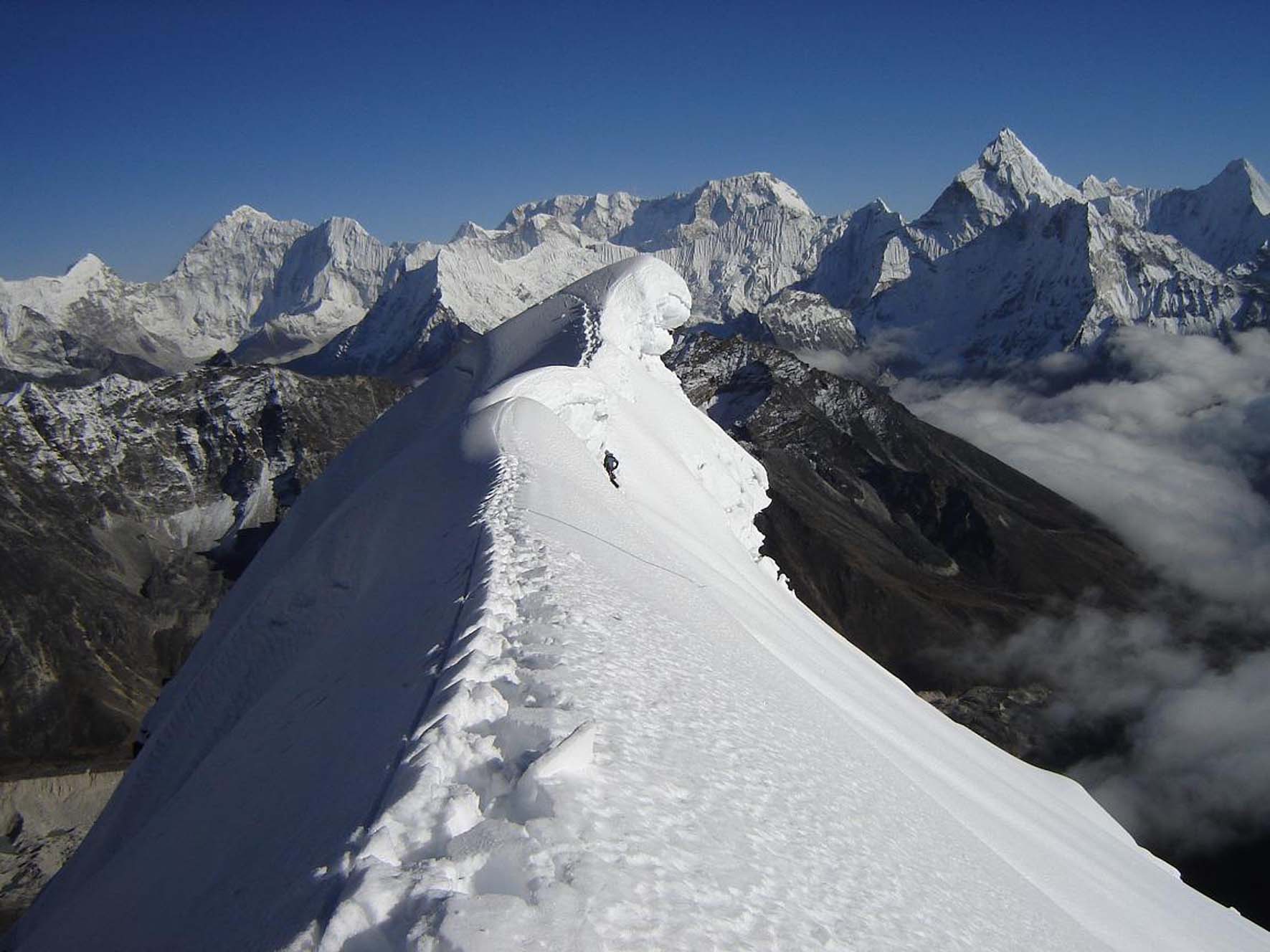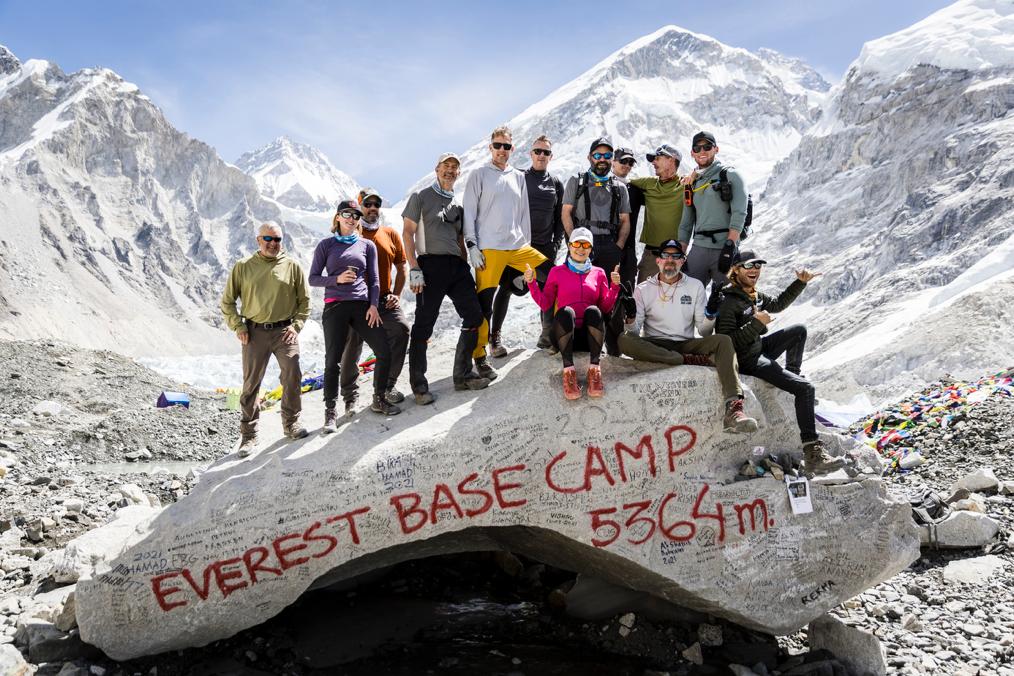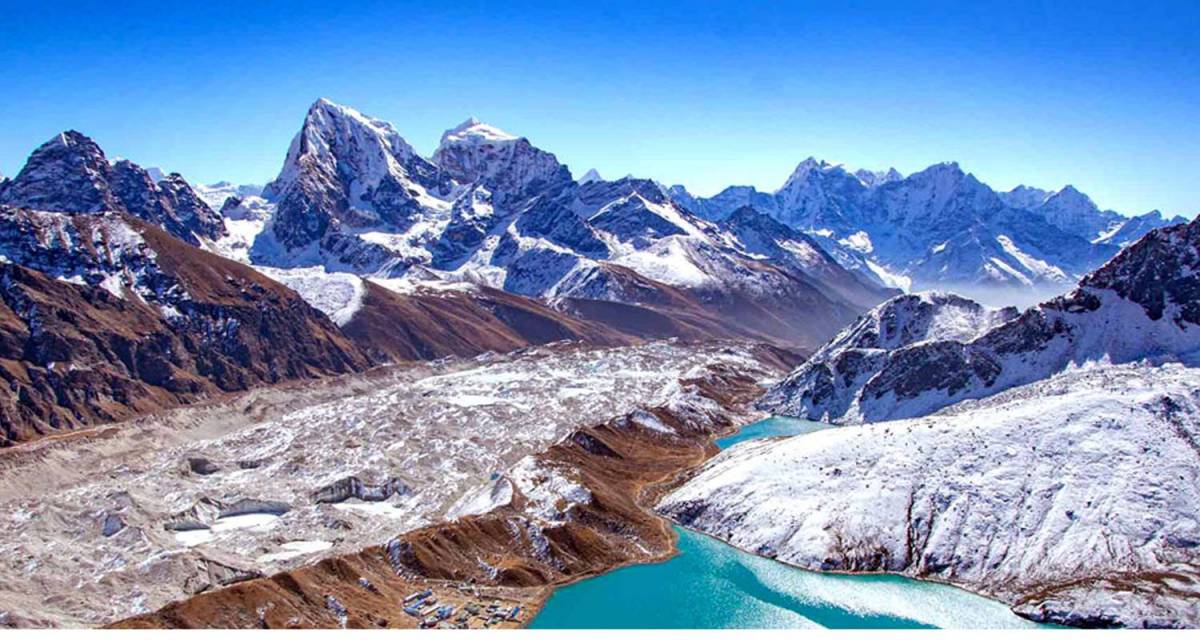Ama Dablam is often referred to as the "Matterhorn of the Himalayas" due to its soaring, pyramidal shape. The name "Ama Dablam" translates to "Mother's Necklace," reflecting the mountain's resemblance to a mother protecting her child with outstretched arms. The hanging glacier on the southwest face is thought to resemble a dablam, which is a traditional double-pendant containing pictures of gods worn by Sherpa women.
Features:
- Southwest Ridge: The most popular route to the summit, characterized by a combination of rock, snow, and ice. This ridge offers a challenging yet rewarding climb, known for its technical difficulty and spectacular views.
- Base Camp: Located at an altitude of approximately 4,570 meters (15,000 feet). It's a popular site for climbers to acclimatize and prepare for the ascent.
- Climbing Seasons: The best times to climb Ama Dablam are typically in the pre-monsoon (April to May) and post-monsoon (September to October) seasons, when the weather is more stable.
Cultural and Environmental Significance:
Ama Dablam holds cultural significance for the local Sherpa community, and it is a prominent landmark for trekkers on their way to Everest Base Camp. The mountain is part of the Sagarmatha National Park, a UNESCO World Heritage Site, known for its rich biodiversity and stunning landscapes.
Climbing History:
- First Ascent: The first successful ascent of Ama Dablam was made on March 13, 1961, by Mike Gill, Barry Bishop, Mike Ward, and Wally Romanes via the Southwest Ridge.
- Challenges: The climb involves negotiating exposed ridges, vertical ice walls, and challenging rock sections. It requires climbers to have a high level of technical proficiency and experience in high-altitude mountaineering.
Ama Dablam is celebrated for its dramatic beauty and technical climbing challenges, making it a coveted peak for mountaineers worldwide.
